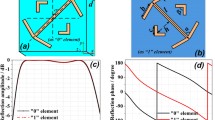Abstract
Radar cross section (RCS) reduction technologies are very important in survivability of the military naval vessels. Ship appearance shaping as an effective countermeasure of RCS reduction redirects the scattered energy from one angular region of interest in space to another region of little interest. To decrease the scattering electromagnetic signals from ship scientifically, optimization methods should be introduced in shaping design. Based on the assumption of the characteristic section design method, mathematical formulations for optimal shaping design were established. Because of the computation-intensive analysis and singularity in shaping optimization, the response surface method (RSM) combined genetic algorithm (GA) was proposed. The polynomial response surface method was adopted in model approximation. Then genetic algorithms were employed to solve the surrogate optimization problem. By comparison RCS of the conventional and the optimal design, the superiority and effectiveness of proposed design methodology were verified.
Similar content being viewed by others
References
George James L. History of warships [M]. Annapolis: Naval Institute Press, 1998.
Kotte E, Shaeffer J. Radar cross section [M]. 2nd ed. Boston: Artech Housing Inc, 1993.
Andersh D, Moore J, Kosanovich S. Xpatch 4: the next generation in high frequency electromagnetic modeling and simulation software [C]//IEEE International Radar Conference. Alexandria Virginia: IEEE, 2000: 844–849.
van Tonder Johannes J, Jakobus U. Fast multipole solution of metallic and dielectric scattering problems in FEKO [C]//2005 IEEE/ACES International Conference on Wireless Communications and Applied Computational Electromagnetics. [s.l.]: IEEE, 2005: 513–516.
Box G P, Hunter J S. Multifactor experimental designs for exploring response surfaces [J]. Annals of Mathematical Statistics, 1957, 28: 194–241.
Harrison P N, Le Riche R, Haftka R T. Design of stiffened composite panels by genetic algorithms and response surface approximations [C]//AIAA/ASME/ASCE/AHS /ASC Structures, Structural Dynamics and Mater. Conf. New Orleans, LA: AIAA, 1995: 58–68.
Wang G, Dong Z, Aitcheson P. Adaptive response surface method: a global optimization scheme for approximation-based design problems [J]. Journal of Engineering Optimization, 2001, 33(6): 707–734.
Bramantia A, Barbaa P, Farina M, et al. Combining response surfaces and evolutionary strategies for multiobjective pareto optimization in electromagnetics [J]. International Journal of Applied Electromagnetics and Mechanics, 2001, 15: 231–236.
Michalewicz Z. Genetic algorithms +data structures=evolution programs [M]. Berlin: Springer Verlag, 1996.
Kaelo P, Ali M. Some variants of the controlled random search algorithm for global optimization [J]. Journal of Optimization Theory and Applications, 2006, 130(2): 253–264.
http://www.globalsecurity.org/military/systems/ship/sea_shadow-ref.htm, 2007.
Author information
Authors and Affiliations
Corresponding author
Additional information
Foundation item: the National Natural Science Foundation of China (No. 10672100)
Rights and permissions
About this article
Cite this article
Yang, Dq., Guo, Fj. Ship appearance optimal design on RCS reduction using response surface method and genetic algorithms. J. Shanghai Jiaotong Univ. (Sci.) 13, 336–342 (2008). https://doi.org/10.1007/s12204-008-0336-9
Received:
Published:
Issue Date:
DOI: https://doi.org/10.1007/s12204-008-0336-9
Key words
- radar cross section (RCS)
- characteristic section design method
- response surface method
- genetic algorithm (GA)




